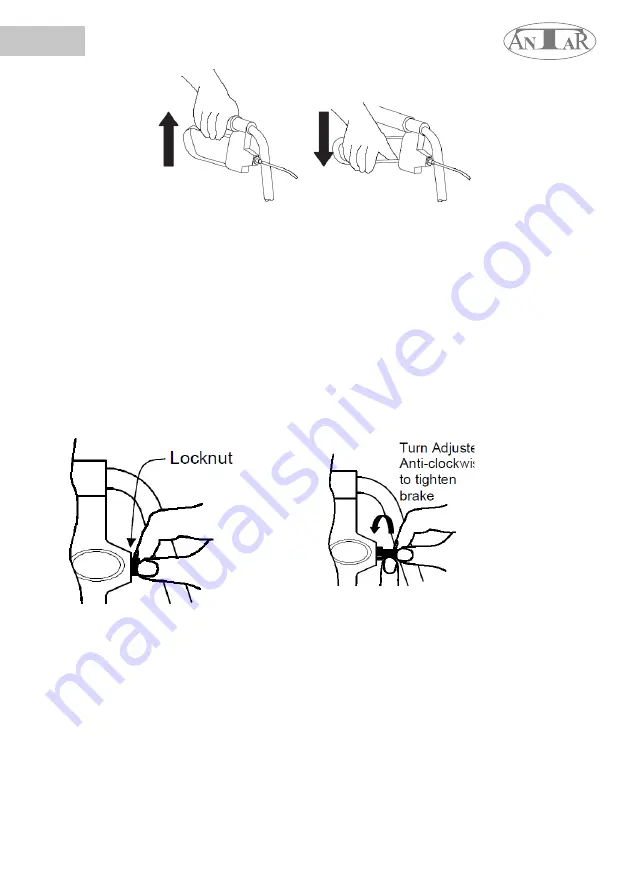
- 4 -
fig. 1a
fig. 1b
Maintenance cont.
Adjusting the brakes (see fig. 4)
1. There are two brake adjusters on both sides of the walker - one in front of the brake lever and the other on the rear
frame legs, behind the wheels.
2. To adjust the brake lever, loosen the lock nut (you may need to use the appropriate tools for this), turn the adjuster
counterclockwise to increase the brake pressure, and then tighten the lock nut again (see fig. 4).
3. To adjust the brake on the rear legs of the frame, loosen the lock nut (you may need to use the appropriate tools
for this), turn the adjuster counterclockwise to increase brake pressure, and then retighten the lock nut. Correct
adjustment of the brake mechanism requires no more than 3-4 mm gap between its lining and the wheel - these
elements should also not touch each other.
4. Note: After changing the settings of the brakes, they should be tested before using the walker.
5. If the brake pressure does not increase as a result of the adjustment, the walker must not be used
fig. 4
Note: When using and handling the wheelchair, and when folding it and adjusting the mechanisms, there may be a
risk of entrapment and / or pinching of body parts of the user / accompanying person in openings / gaps between
the components. These steps should be performed with extreme caution.
After completing the adjustment, stabilize the position by tightening the nuts / bolts carefully.
METHOD OF DISPOSAL OF THE PRODUCT AFTER REMOVING FROM SERVICE
After the device is withdrawn from use, the medical device can be disposed of as normal household waste, except
for electrical products - proceed in the manner appropriate for the disposal of electrical and electronic equipment.
ENG





































